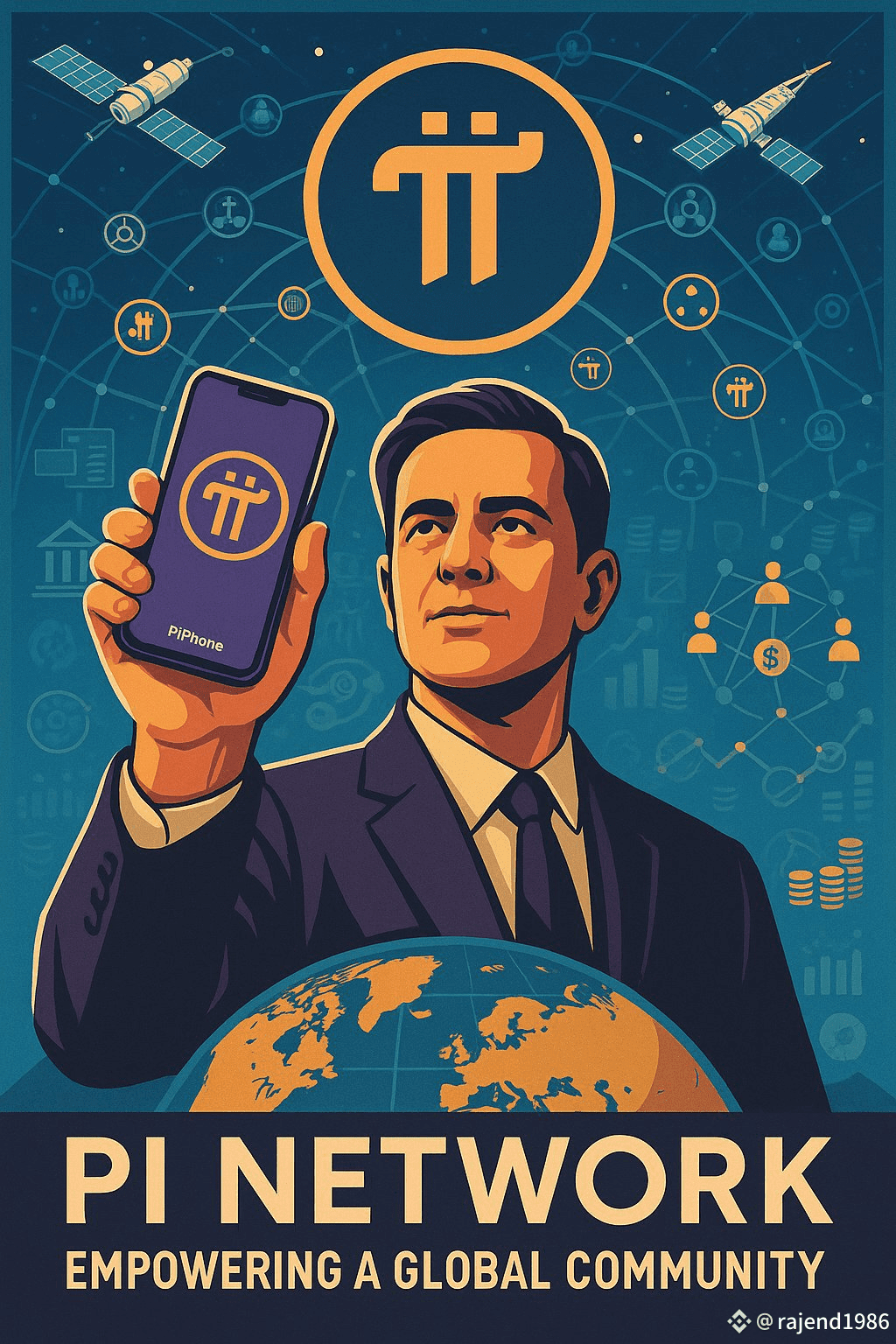PiPhone: The Terminal of Digital Independence Built by Starlink and Pi Network
PiPhone: The Convergence of Communication and Currency Begins
Not Just a Smartphone – The Key to a New Digital Civilization
The Asset Rights Revolution on Top of Starlink
America’s Hidden Weapon: How Far Is the PiPhone Already Prepared?
[ This article includes predictive analysis and may differ from actual outcomes. ]

1. Introduction: When Connection Meets Transaction
Elon Musk recently reposted Starlink’s official X update, stating, “We are committed to a mission to reach people who are not connected to the Internet.” This is more than a simple product announcement—it is a global declaration. Musk is committing to provide the world with universal digital access, laying the physical infrastructure for a new online civilization.
Meanwhile, Pi Network’s founder, Dr. Nicolas Kokkalis, has declared Pi’s mission to be the creation of “the most inclusive peer-to-peer ecosystem and online experience, built on the world’s most widely used cryptocurrency.” This is a strategy to empower the masses with economic sovereignty and decentralized ownership.
In reality, these two missions are a division of roles—**one provides the connection, the other provides the infrastructure of value and governance**. The convergence point of these two paradigms may lie in a single, powerful device: the PiPhone.
2. Starlink’s Current Limitation and the Need for a Hidden Card
Although Starlink has successfully deployed a global satellite internet system, its usability still depends on bulky ground-based receiver terminals. The need for dish setups, local power, and favorable positioning limits its adoption in rural and underdeveloped areas across Africa, South Asia, and Latin America.
For Starlink to truly deliver on its promise of “connecting the unconnected,” it must eliminate these barriers with a handheld satellite receiver—essentially a smartphone-class device. This is where the idea of a Starlink-connected, Pi-integrated “PiPhone” becomes not only feasible but necessary.
3. What the PiPhone Would Enable
The PiPhone is not just another cheap smartphone—it is a digital civilization in your pocket. It would directly connect to Starlink satellites, enabling global internet access without relying on terrestrial infrastructure. Simultaneously, it would come preloaded with Pi Wallet, allowing users to transact, store value, and interact with smart contracts.
The PiPhone would run applications built on Pi’s App Studio, allowing users to engage in decentralized production, content creation, DAO governance, and peer-to-peer exchange—all from one device.
If the PiPhone were priced affordably, or even distributed freely in certain regions, it would immediately become a gateway to digital citizenship. Entire populations currently excluded from the digital and financial world would suddenly gain access—not only to the internet but also to decentralized economic agency.
4. Global Impact and the Role in America’s Digital Strategy
The PiPhone could serve as an unofficial but powerful tool of U.S. digital dominance. Without military occupation or political intervention, the U.S. could exert influence over global communications (via Starlink), finance (via Pi Network), and identity/governance (via smartphone deployment).
Authoritarian and censorship-prone regimes would find themselves unable to block the spread of decentralized access, economic independence, and uncensorable information. On the other hand, the U.S. could absorb entire regions into its “soft empire” of digital freedom—not by force, but through utility.
In fact, the technological pieces are already aligning. Elon Musk has introduced the Starlink Mini, a move toward handheld, consumer-friendly terminals. Simultaneously, Pi Network has rolled out KYC verification, wallet systems, App Studio, and staking—all of which can run locally on a device like the PiPhone.
This indicates that while the hardware may not yet be publicly available, the ecosystem is already technologically and economically ready for such a device.
Conclusion: The PiPhone Is Not a Device — It Is a Digital Identity
The PiPhone is not merely a gadget for internet access or crypto trading. It is a tool for restoring digital rights, enabling financial inclusion, and fostering governance without borders. It empowers individuals with identity, ownership, and participation in a new kind of civilization—one defined not by territory, but by access and agency.
If Starlink represents freedom of communication from the sky, and Pi Network provides freedom of economic participation on the ground, the PiPhone is the bridge that puts both powers in people’s hands.
In the end, this may be the most powerful hidden strategy in America's global playbook:
“Connect the unconnected, and empower the connected.”
That future is no longer a fantasy. It is taking shape.

